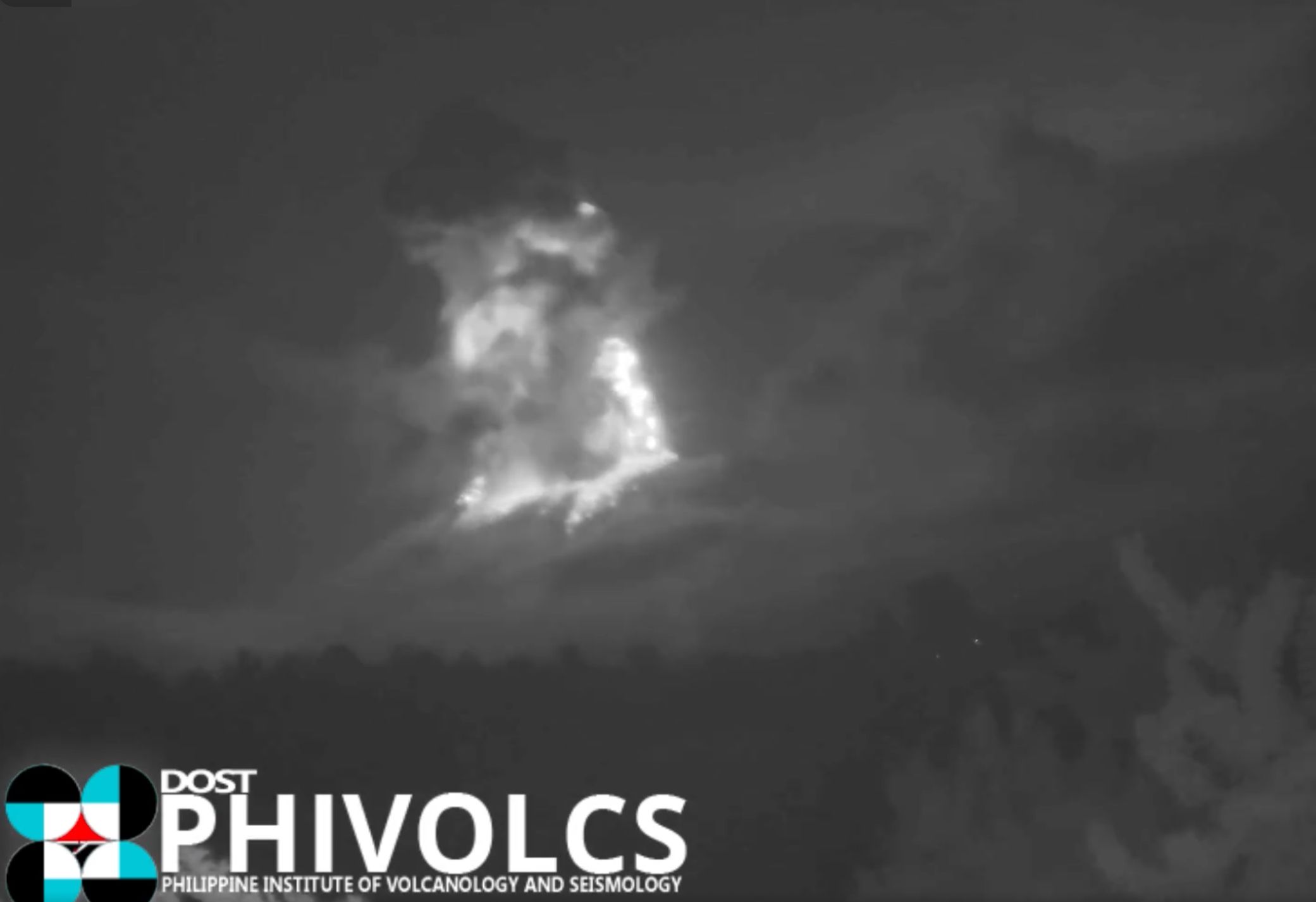Phivolcs chief highlights potential scenarios following Kanlaon Volcano eruption

Following an "explosive eruption" on Monday evening, June 3, Kanlaon Volcano was placed on Alert Level 2, indicating "increasing unrest.”
This prompted Philippine Institute of Volcanology and Seismology (Phivolcs) Director Teresito Bacolcol to highlight three possible scenarios for the coming days.
“After ng eruption yesterday, hindi na nasundan. Sana ganun na lamang. Sana hindi na maulit pa but we are still closely monitoring the activity of Kanlaon (After yesterday’s eruption, there hasn’t been any subsequent activity. We hope it remains that way. We hope it doesn’t happen again, but we are still closely monitoring the activity of Kanlaon),” Bacolcol said in a televised public briefing on Tuesday, June 4.
Between midnight and noon on Tuesday, Phivolcs only recorded 43 volcanic earthquakes, indicating heightened seismic activity in Kanlaon Volcano.
Scenarios
Based on Kanlaon Volcano’s monitoring parameters, Bacolcol outlined three possible scenarios that may occur in the next few days.
Firstly, if the current parameters are sustained, phreatic and short-lived explosive eruptions similar to the recent activity may occur within the next few days, he said.
In such a scenario, Phivolcs will maintain Alert Level 2 until significant changes in monitoring parameters are observed, he added.
In the second scenario, Bacolcol said if seismic, ground deformation and volcanic gas parameters worsen, a magmatic eruption could ensue, prompting Phivolcs to raise the alert level from 2 to 3.
However, he emphasized the historical rarity of magmatic eruptions at Kanlaon, with the majority of past eruptions being phreatic.
“If you look at the eruption history of Kanlaon Volcano, from 1866 until yesterday (June 3), isang beses lamang nagkaroon ng magmatic eruption, that was in 1902. Karamihan ng eruption ng Kanlaon Volcano is phreatic eruption (If you look at the eruption history of Kanlaon Volcano, from 1866 until yesterday (June 3), there has been only one magmatic eruption, which occurred in 1902. The majority of eruptions of Kanlaon Volcano are phreatic eruptions),” Bacolcol said.
In the third scenario, he noted that if monitoring parameters decline, Phivolcs will consider lowering the alert level from 2 to 1, but only after at least two weeks of sustained decrease in the parameters.
Phreatic vs magmatic eruption
Meanwhile, Bacolcol said further analysis of the June 3 eruption is required to accurately determine whether the volcanic activity was a phreatic or magmatic eruption.
“‘Yung phreatic eruption involves water coming into contact with hot volcanic materials—hot gases or hot rocks—leading to explosive steam. ‘Yung magmatic eruption naman is driven by the release of magma and volcanic gases (The phreatic eruption involves water coming into contact with hot volcanic materials—hot gases or hot rocks—leading to explosive steam. On the other hand, the magmatic eruption is driven by the release of magma and volcanic gases),” he explained.
“For now, ‘yung nangyaring volcanic eruption kahapon hindi pa natin mai-classify if it’s phreatic or magmatic or if its a combination of both. We need more data, we need to analyze the ash samples na binuga kahapon and check if may bagong magma or old materials ‘yung binuga kahapon (For now, we cannot yet classify yesterday's volcanic eruption as either phreatic or magmatic, or if it's a combination of both. We need more data; we need to analyze the ash samples emitted yesterday and check if there are new magma or old materials within the emitted ash),” Bacolcol said.
The Phivolcs chief noted that the last significant eruption of Kanlaon Volcano occurred on Dec. 9, 2017, which produced a four-kilometer eruption column.
He added that because of the cloudy conditions on Dec. 20, 2017, no eruption column was visible despite the recording of 412 volcanic earthquakes.
Precautions
Phivolcs explained that Kanlaon Volcano’s unrest is caused by shallow magmatic processes, which could eventually lead to more explosive eruptions or even a hazardous magmatic eruption.
The public is strongly advised to remain vigilant and avoid the four-kilometer-radius permanent danger zone to reduce the risk of "sudden" explosions, rockfalls, and landslides.
In the event of ashfall events that may affect communities near Kanlaon’s crater, people should cover their noses and mouths with a damp, clean cloth or dust mask.